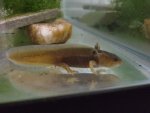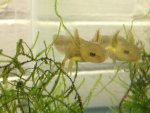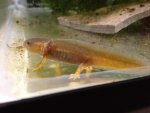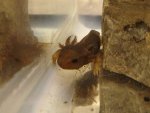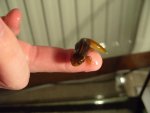Neotenic_Jaymes
Active member
I know that temperature, water quality and water depth plays a big part in morphing. I have a group of T. verrucosus CB 2011 that hatched last August. They're now advanced larvae that don't seem to want to advance any further, yet. These larvae have been kept at temperatures of 40-55 degrees, barely ever above 60 degrees. Eating live blackworms.
I'm glad mine are still aquatic larvae after about 7-8 months. My biggest ones are about 3.5 inches almost 4 inches. I'm not concerned about them not morphing out yet. Just wondering what others experienced with there broods.
I'm glad mine are still aquatic larvae after about 7-8 months. My biggest ones are about 3.5 inches almost 4 inches. I'm not concerned about them not morphing out yet. Just wondering what others experienced with there broods.

